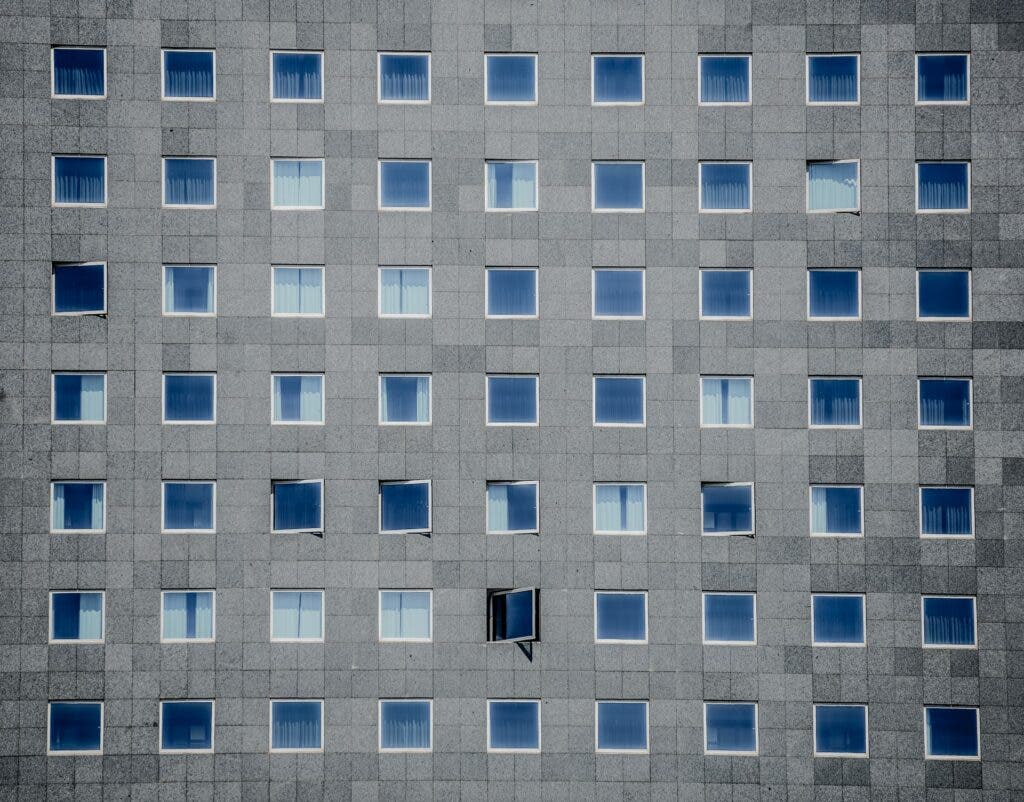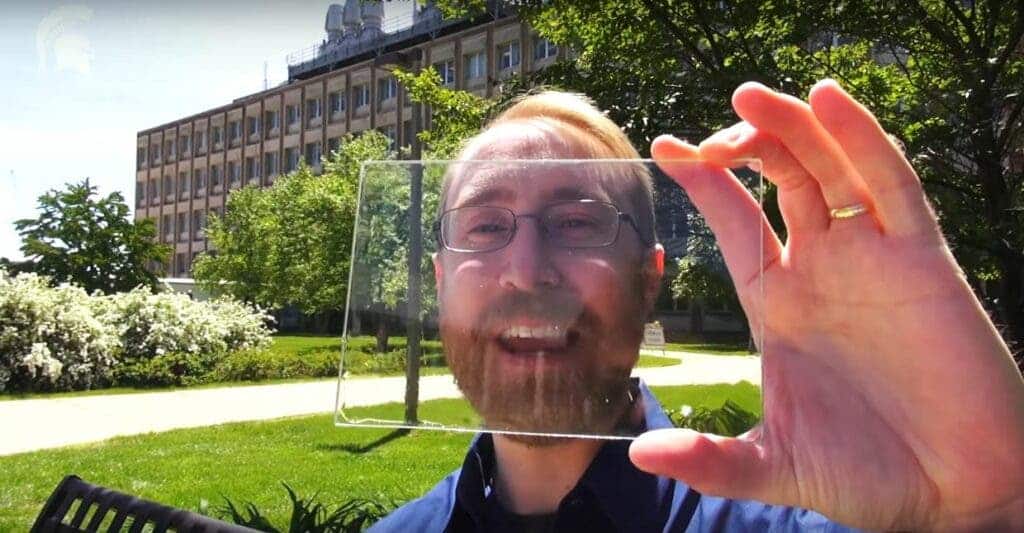No matter how sustainable, eco-friendly, and clean sources of energy they are, conventional solar panels require a large setup area and heavy initial investment. Due to these limitations, it’s hard to introduce them in urban areas (especially neighborhoods with lots of apartment blocks or shops). But thanks to the work of ingenious engineers at the University of Michigan, that may soon no longer be the case.
The researchers have created transparent solar panels which they claim could be used as power-generating windows in our homes, buildings, and even rented apartments.

If these transparent panels are indeed capable of generating electricity cost-efficiently, the days of regular windows may be passing as we speak. Soon, we could have access to cheap solar energy regardless of where we live — and to make it even better, we could be rid of those horrific power cuts that happen every once in a while because, with transparent glass-like solar panels, every house and every tall skyscraper will be able to generate its own power independently.
An overview of the transparent solar panels
In order to generate power from sunlight, solar cells embedded on a solar panel are required to absorb radiation from the sun. Therefore, they cannot allow sunlight to completely pass through them (in the way that a glass window can). So at first, the idea of transparent solar panels might seem preposterous and completely illogical because a transparent panel should be unable to absorb radiation.
But that’s not necessarily the case, researchers have found. In fact, that’s not the case at all.

The solar panels created by engineers at the University of Michigan consist of transparent luminescent solar concentrators (TLSC). Composed of cyanine, the TLSC is capable of selectively absorbing invisible solar radiation including infrared and UV lights, and letting the rest of the visible rays pass through them. So in other words, these devices are transparent to the human eye (very much like a window) but still absorb a fraction of the solar light which they can then convert into electricity. It’s a relatively new technology, only first developed in 2013, but it’s already seeing some impressive developments.
Panels equipped with TLSC can be molded in the form of thin transparent sheets that can be used further to create windows, smartphone screens, car roofs, etc. Unlike, traditional panels, transparent solar panels do not use silicone; instead they consist of a zinc oxide layer covered with a carbon-based IC-SAM layer and a fullerene layer. The IC-SAM and fullerene layers not only increase the efficiency of the panel but also prevent the radiation-absorbing regions of the solar cells from breaking down.
Surprisingly, the researchers at Michigan State University (MSU) also claim that their transparent solar panels can last for 30 years, making them more durable than most regular solar panels. Basically, you could fit your windows with these transparent solar cells and get free electricity without much hassle for decades. Unsurprisingly, this prospect has a lot of people excited.
According to Professor Richard Lunt (who headed the transparent solar cell experiment at MSU), “highly transparent solar cells represent the wave of the future for new solar applications”. He further adds that these devices in the future can provide a similar electricity-generation potential as rooftop solar systems plus, they can also equip our buildings, automobiles, and gadgets with self-charging abilities.
“That is what we are working towards,” he said. “Traditional solar applications have been actively researched for over five decades, yet we have only been working on these highly transparent solar cells for about five years. Ultimately, this technology offers a promising route to inexpensive, widespread solar adoption on small and large surfaces that were previously inaccessible.”
Recent developments in the field of transparent solar cell technology
Apart from the research work conducted by Professor Richard Lunt and his team at MSU, there are some other research groups and companies working on developing advanced solar-powered glass windows. Earlier this year, a team from ITMO University in Russia developed a cheaper method of producing transparent solar cells. The researchers found a way to produce transparent solar panels much cheaper than ever before.
“Regular thin-film solar cells have a non-transparent metal back contact that allows them to trap more light. Transparent solar cells use a light-permeating back electrode. In that case, some of the photons are inevitably lost when passing through, thus reducing the devices’ performance. Besides, producing a back electrode with the right properties can be quite expensive,” says Pavel Voroshilov, a researcher at ITMO University’s Faculty of Physics and Engineering.
“For our experiments, we took a solar cell based on small molecules and attached nanotubes to it. Next, we doped nanotubes using an ion gate. We also processed the transport layer, which is responsible for allowing a charge from the active layer to successfully reach the electrode. We were able to do this without vacuum chambers and working in ambient conditions. All we had to do was dribble some ionic liquid and apply a slight voltage in order to create the necessary properties,” adds co-author Pavel Voroshilov.

PHYSEE, a technology company from the Netherlands has successfully installed their solar energy-based “PowerWindow” in a 300 square feet area of a bank building in The Netherlands. Though at present, the transparent PowerWindows are not efficient enough to meet the energy demands of the whole building, PHYSEE claims that with some more effort, soon they will be able to increase the feasibility and power generation capacity of their solar windows.
California-based Ubiquitous Energy is also working on a “ClearView Power” system that aims to create a solar coating that can turn the glass used in windows into transparent solar panels. This solar coating will allow transparent glass windows to absorb high-energy infrared radiations, the company claims to have achieved an efficiency of 9.8% with ClearView solar cells during their initial tests.
In September 2021, the Nippon Sheet Glass (NSG) Corporation facility located in Chiba City became Japan’s first solar window-equipped building. The transparent solar panels installed by NSG in their facility are developed by Ubiquitous Energy. Recently, as a part of their association with Morgan Creek Ventures, Ubiquitous Energy has also installed transparent solar windows on Boulder Commons II, an under-construction commercial building in Colorado.
All these exciting developments indicate that sooner or later, we also might be able to install transparent power-generating solar windows in our homes. Such a small change in the way we produce energy, on a global scale could turn out to be a great step towards living in a more energy-efficient world.
Not there just yet
If this almost sounds too good to be true, well sort of is. The efficiency of these fully transparent solar panels is around 1%, though the technology has the potential to reach around 10% efficiency — this is compared to the 15% we already have for conventional solar panels (some efficient ones can reach 22% or even a bit higher).
So the efficiency isn’t quite there yet to make transparent solar cells efficient yet, but it may get there in the not-too-distant future. Furthermore, the appeal of this system is that it can be deployed on a small scale, in areas where regular solar panels are not possible. They don’t have to replace regular solar panels, they just have to complement them.
When you think about it, solar energy wasn’t regarded as competitive up to about a decade ago — and a recent report found that now, it’s the cheapest form of electricity available so far in human history. Although transparent solar cells haven’t been truly used yet, we’ve seen how fast this type of technology can develop, and the prospects are there for great results.
The mere idea that we may soon be able to power our buildings through our windows shows how far we’ve come. An energy revolution is in sight, and we’d be wise to take it seriously.


